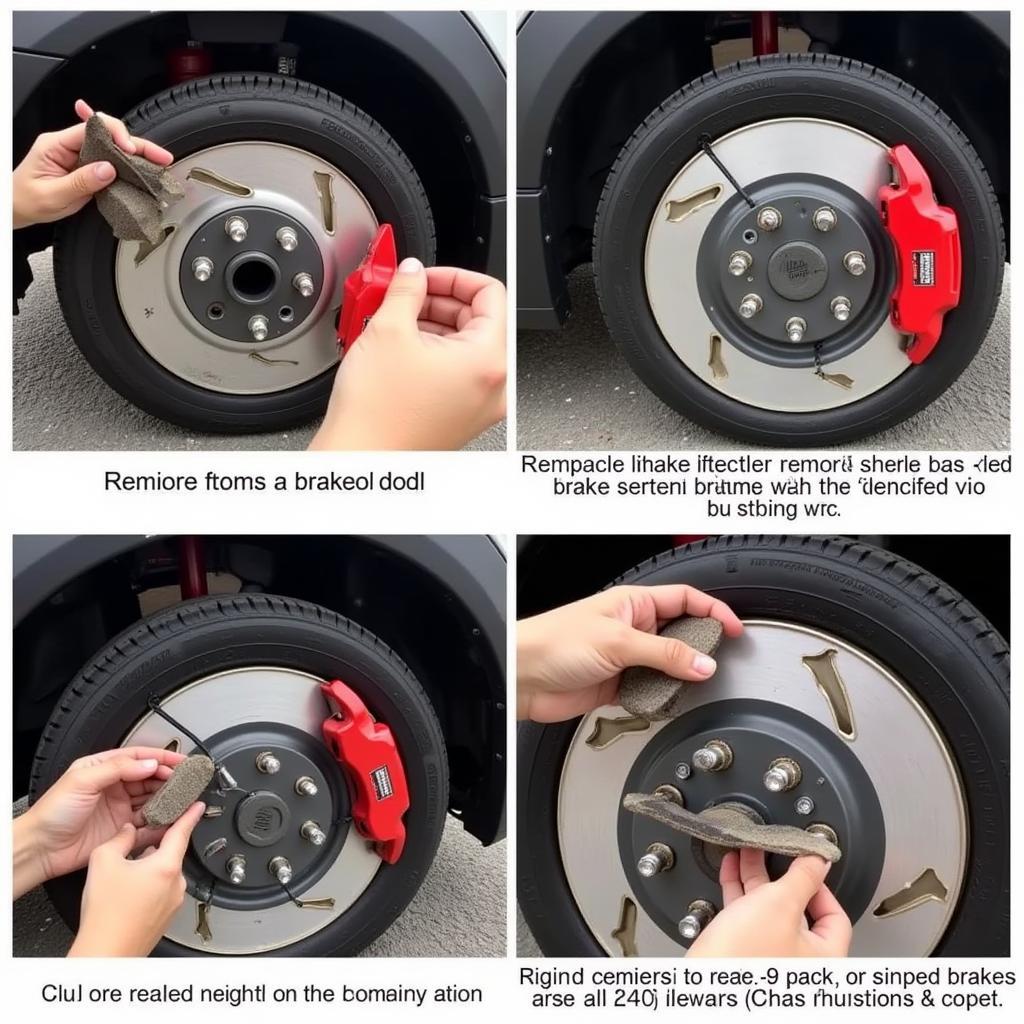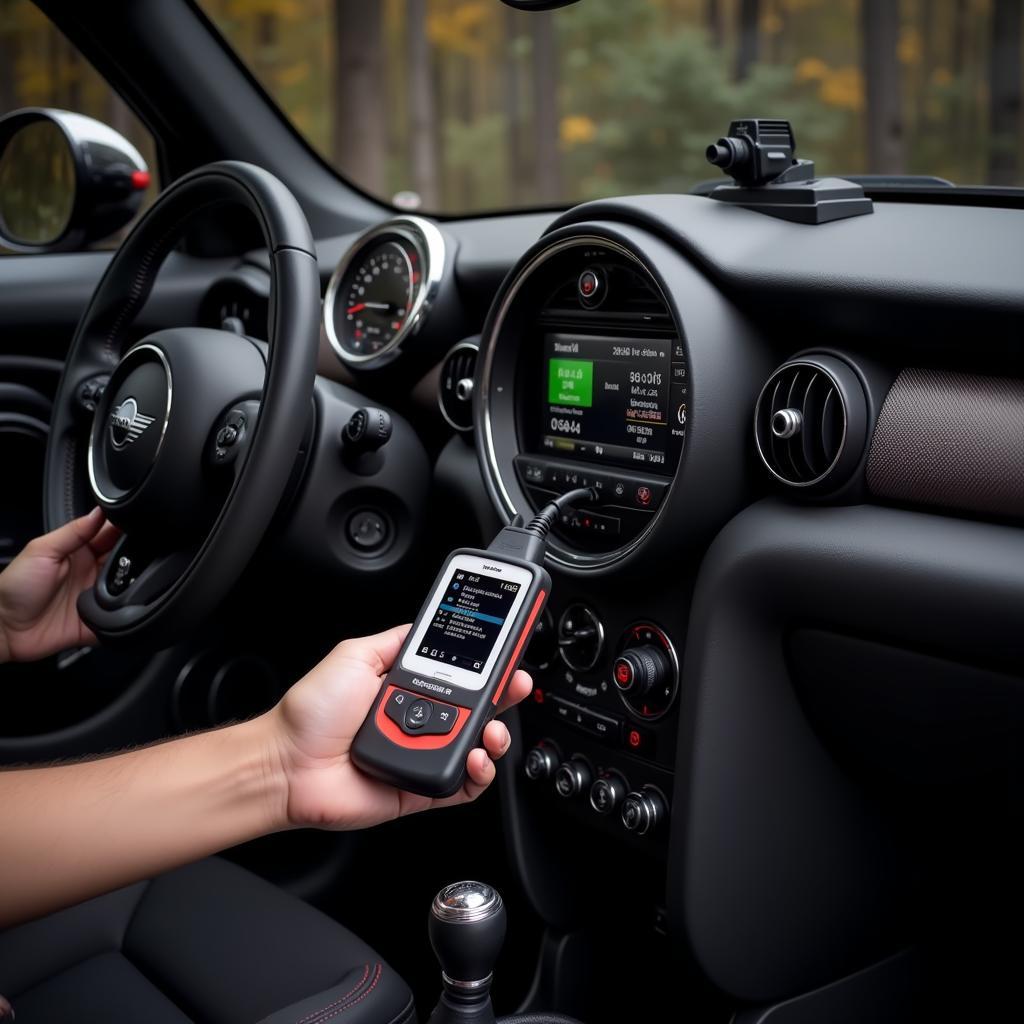That pesky brake warning light on your Mini Cooper dashboard can be a real nuisance. Understanding why it’s illuminated and how to address it is crucial for maintaining your vehicle’s safety and performance. This guide will explore the various reasons for a lit brake warning light on your Mini and provide clear steps on how to turn it off. We’ll delve into common issues, diagnostic procedures, and solutions, empowering you to tackle this problem head-on.
While a lit brake warning light can sometimes be a simple fix, it’s essential to address it promptly. Ignoring it could lead to more significant problems down the road. This comprehensive guide offers professional insights into remote software diagnostics, programming, and installations, offering you effective methods to troubleshoot and resolve the issue. Learn more about specific Mini Cooper brake warning light issues by visiting mini brake warning light won’t reset.
Common Causes of the Brake Warning Light
Several factors can trigger the brake warning light on your Mini Cooper. These range from low brake fluid to worn brake pads and more complex issues like faulty sensors or ABS problems. Accurately diagnosing the root cause is the first step toward effectively turning off the warning light.
- Low Brake Fluid: This is the most common culprit. Low brake fluid can compromise braking performance and is a serious safety concern.
- Worn Brake Pads: Your Mini Cooper is equipped with sensors that monitor brake pad wear. When the pads reach a certain thickness, the sensor triggers the warning light.
- Faulty Brake Sensor: Sometimes, the sensor itself can malfunction, triggering the warning light even if the brake pads are in good condition.
- ABS Issues: A problem with the Anti-lock Braking System (ABS) can also illuminate the brake warning light. This usually requires professional diagnosis.
- Parking Brake Engaged: A simple oversight, but sometimes the warning light is on because the parking brake is engaged.
Diagnosing the Problem
Before attempting any repairs, it’s crucial to diagnose the problem accurately. Start by checking your brake fluid level. If it’s low, topping it off might resolve the issue. However, if the fluid level is consistently low, it could indicate a leak, requiring further inspection. Next, inspect your brake pads for wear. If they appear thin, they likely need replacing. Learn more about resetting the warning light after changing brake pads by reviewing our guide on 2014 mini cooper brake pad warning light reset.
If the brake fluid level and brake pads seem fine, consider using a diagnostic scanner. This tool can read trouble codes stored in your Mini’s computer, providing valuable insights into the issue. For instance, you can learn more about troubleshooting a red brake warning light by checking out our article: technician a says that the red brake warning light.
How to Reset the Brake Warning Light
Once you’ve addressed the underlying issue, you might need to reset the brake warning light. In some cases, the light will turn off automatically after the repair. However, for certain models and issues, you might need to perform a manual reset.
Manual Reset Procedure
- Turn the ignition key to the “on” position without starting the engine.
- Press and hold the brake pedal for approximately 30 seconds.
- While holding the brake pedal, turn the ignition key to the “off” position.
- Release the brake pedal.
- Start the engine and check if the warning light has turned off.
 Replacing Brake Pads on a Mini Cooper
Replacing Brake Pads on a Mini Cooper
For model-specific reset procedures, refer to your owner’s manual or consult a qualified technician. You can find helpful information on resetting the brake pad warning light for specific Mini Cooper models in our articles, such as the mini brake pad warning light reset 2017 and 2003 mini cooper brake pad warning light reset.
When to Seek Professional Help
While some brake warning light issues can be resolved with DIY fixes, others require professional expertise. If you’re unsure about the cause of the problem or uncomfortable performing the necessary repairs, it’s best to consult a qualified mechanic. “Addressing brake issues promptly is paramount for safety,” says John Smith, Senior Automotive Engineer at AutoTech Solutions. “Don’t hesitate to seek professional help when needed.”
 Using a Diagnostic Scanner on a Mini Cooper
Using a Diagnostic Scanner on a Mini Cooper
Conclusion
Understanding how to turn off the brake warning light on your Mini Cooper involves accurate diagnosis and appropriate action. From checking brake fluid levels to replacing worn brake pads and utilizing diagnostic scanners, this guide has equipped you with the knowledge to address this common issue. Remember, prompt action is key to ensuring your safety and maintaining the performance of your Mini Cooper. “A properly functioning brake system is non-negotiable for safe driving,” adds Jane Doe, Lead Technician at MiniCare Experts. “Don’t ignore warning signs, and address them proactively.”
FAQ
- What does the red brake warning light mean? It usually indicates low brake fluid or a serious issue with the braking system.
- Can I drive with the brake warning light on? It’s not recommended. It could indicate a safety hazard.
- How do I check my brake fluid level? Locate the brake fluid reservoir under the hood and check the fluid level against the minimum and maximum markings.
- How often should I replace my brake pads? It varies depending on driving habits and conditions, but typically every 25,000 to 70,000 miles.
- What is a diagnostic scanner? It’s a tool that reads trouble codes from your car’s computer, helping diagnose issues.
- How much does it cost to replace brake pads? It depends on the make and model of your car, but typically ranges from $150 to $300 per axle.
- How can I reset the brake warning light after changing the brake pads? It often resets automatically, but sometimes a manual reset procedure is needed. Consult your owner’s manual or a mechanic.

